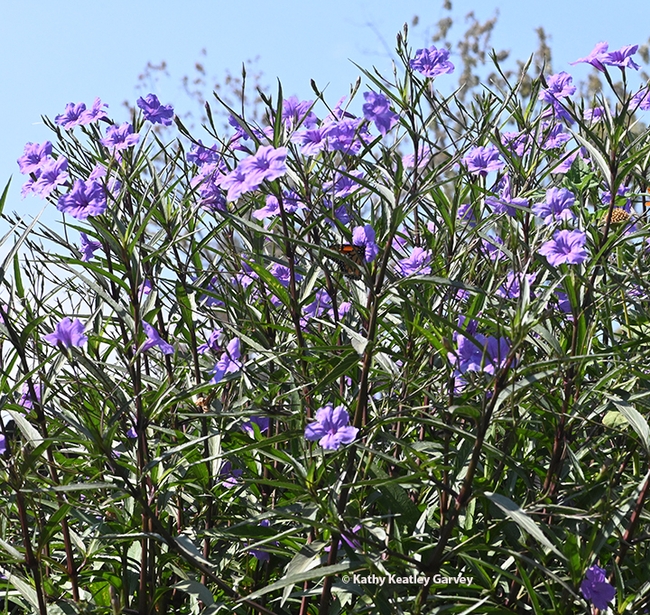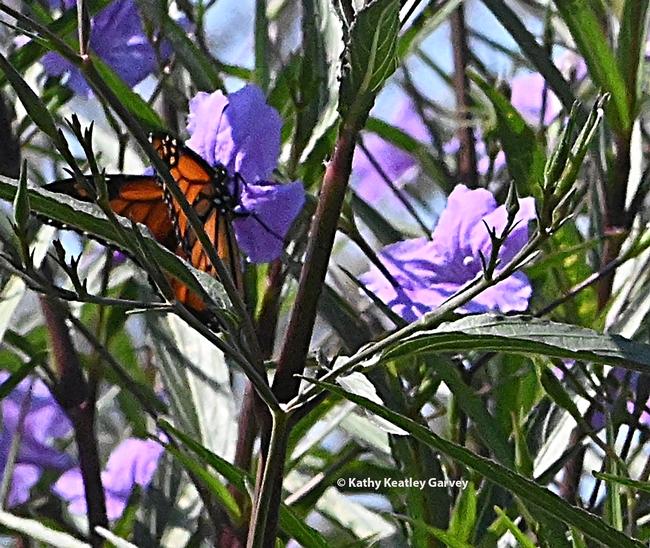Posts Tagged: Mexican petunia
Why the Petunia Patch Reigned Supreme Today
All year long, we've been waiting for those majestic monarchs to visit our pollinator garden in Vacaville, as they have in the past 10 years or...

Find the monarch! A monarch stopped to nectar in a Mexican petunia patch Sept. 15 in a Vacaville pollinator garden. (Photo by Kathy Keatley Garvey)

Zooming in, you can see the iconic monarch nectaring on a Mexican petunia. (Photo by Kathy Keatley Garvey)
Mexican Petunia
About three years ago we were given some mystery seeds by a friend. They were from a “dark green plant with blue crepe paper looking blooms”. I planted them in a corner of the garden next to our garage. Within a relatively short period of time, we had a dark green serrated leaf plant that eventually bloomed with bright blue tubular flowers. It froze back in the winter reappearing in the spring. AND it spread but we found it was easy to pull out the miniature self-seeded plants.
I tried to identify this plant without any luck. Sunset Western Garden Book was read from cover to cover, I asked other gardeners who toured our garden and basically had given up the quest. Then last week during a tour at High Hand Nursery in Loomis with the Vaca Valley Garden Club, I spotted our plant. It is a ‘Ruellia brittoncana’ or Mexican petunia. Finally the mystery plant was identified and had a name.
In doing some research, this plant is native to Mexico and easy to grow in dry or wet soil conditions. They are perennial shrubs that grow about 3 feet tall and 4 feet wide. There are some dwarf varieties available such as 'Katie', which grows to 10 inches in height. With little care these plants produce flowers in white, purple or many shades of blue. They resemble the petunia flower we are familiar with, but the two plants are NOT related. Butterflies and hummingbirds are attracted to the colorful blooms, which makes the plants popular with backyard gardeners.
Gardeners either love Ruellia or dislike it due to its invasive nature. There is a sterile version that will not re-seed called 'Purple Showers'; the flowers are deep purple. Though it will not re-seed, it can spread by its roots if grown in wet soil. Sometimes called desert petunias, the more sun they receive the more blooms they produce. You can propagate Mexican petunias by cuttings, seeds or division.
Plant in the early spring and once established you will have blooms throughout the summer into fall. The plant is hardy enough to survive long periods without water, although young plants need regular watering. They adapt easily and grow well in containers, provided they receive sun. And the best news is Ruellia brittoncana is highly resistant to most disease and pests.

Leaves of the Mexican Petunia. (photos by Sharon Rico)

The crepy flower.

